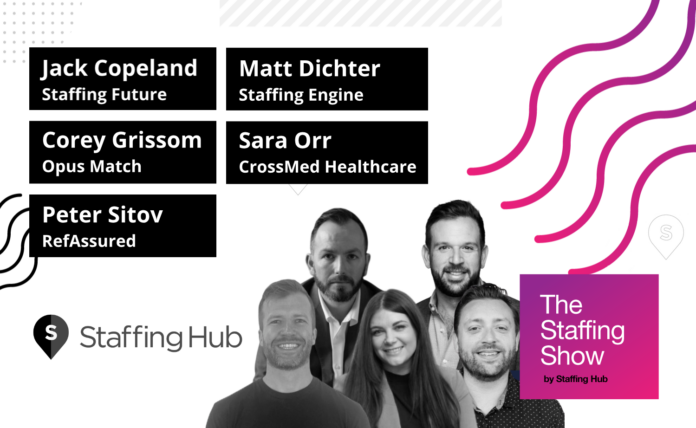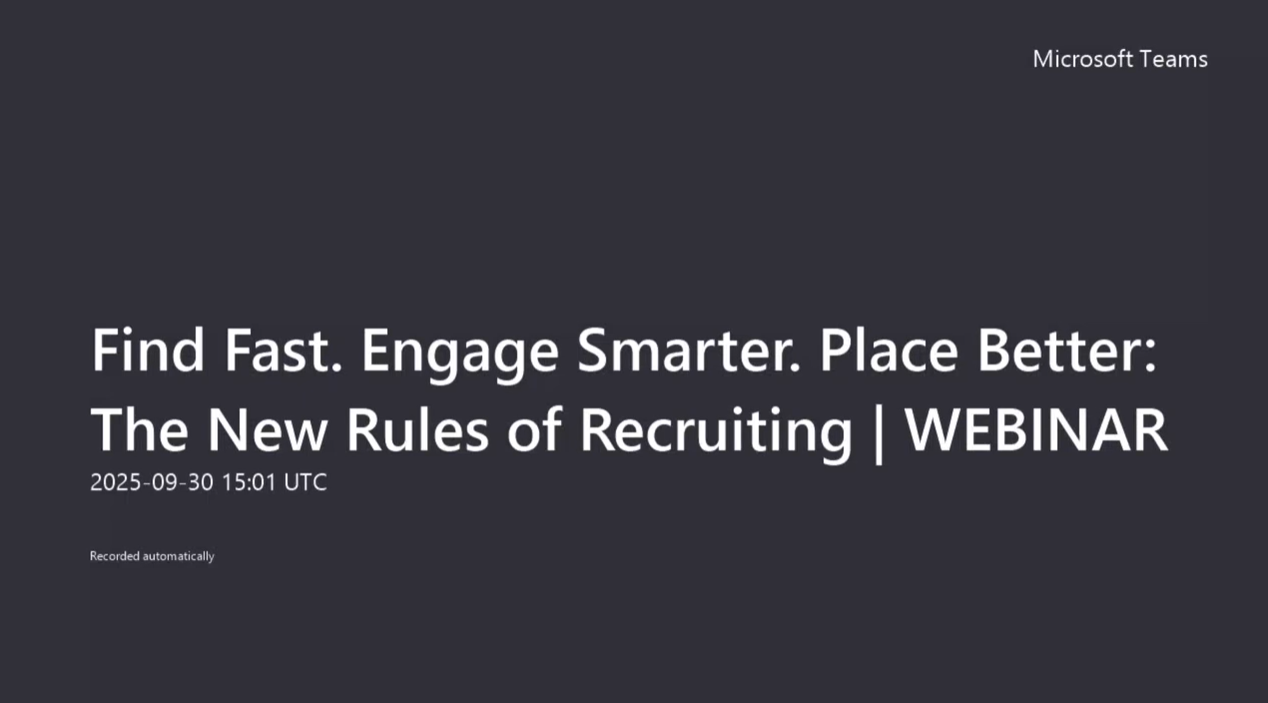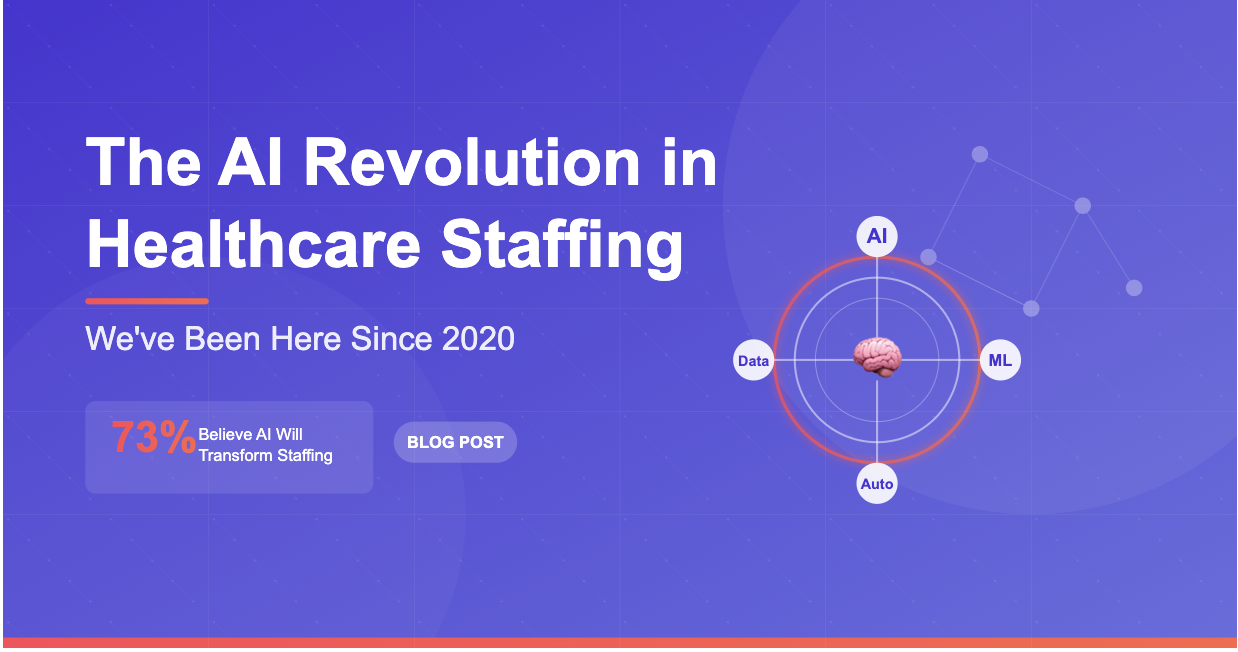The staffing industry is in a period of transformation. Candidates expect speed and transparency, clients demand higher-quality placements, and recruiters are under pressure to do more with less. Technology sits at the heart of this evolution, but the real challenge is knowing which solutions actually drive results.
That’s the conversation Corey Grissom, VP of Sales & Marketing at Opus Match, joined on The Staffing Show by StaffingHub. The episode—“Leveraging Collaborative Technology Stacks to Accelerate Staffing Firms” (May 27, 2025)—brought together several staffing leaders to explore the future of tech in the industry.
You can check out the full podcast here: Leveraging Collaborative Technology Stacks to Accelerate Staffing Firms.
Alongside experts from CrossMed Healthcare, Staffing Engine, RefAssured, and Staffing Future, Corey helped unpack what’s working—and what’s not—when it comes to staffing technology.
This recap dives into the major themes of the discussion, from AI and automation to ROI measurement, the “build vs. buy” debate, and what the next 12 months hold for staffing agencies.

Challenges in Staffing: Speed, Quality, and Loyalty
The panel began by acknowledging the difficult terrain agencies face.
- Candidate expectations have changed. As Sara Orr of CrossMed pointed out, many travel nurses and clinicians are less loyal to a single agency and more focused on pay, speed, and overall experience. Recruiter relationships still matter, but agencies must now compete on seamless digital touchpoints as well.
- Speed is still critical. Matt Dichter of Staffing Engine noted that staffing “is still a speed game.” AI can help accelerate initial candidate engagement, but without a strong recruiter handoff, even the best-qualified leads may slip away.
- Quality is at risk. Peter Sitov of RefAssured emphasized that agencies sometimes cut corners to move faster, leading to weaker vetting and missed red flags. This not only risks client satisfaction but can also damage agency reputation.
Corey added another layer: the restricted job market. With fewer openings and tighter budgets, every candidate interaction matters more. Agencies must differentiate themselves not only from other agencies but also from direct-hire marketplaces and lead sources where candidates increasingly go.
Why the Best Staffing Tech Stacks Are Collaborative
One of the strongest takeaways from the conversation was that no single platform can solve everything. Instead, successful agencies assemble a collaborative ecosystem of best-in-class partners.
CrossMed’s approach offers a blueprint. Their stack includes:
- Staffing Referrals for referral-driven candidate acquisition
- Staffing Future for SEO-driven microsites and staffing-optimized websites
- Opus Match for AI-driven candidate portals, personalized job matching, and credential management
- Staffing Engine for chat automation and lead distribution
- RefAssured for faster, automated reference checking
- Bullhorn as the ATS hub connecting all data
This strategy allows each partner to focus on what they do best while creating a unified candidate journey. As Corey highlighted, “It’s not about point solutions; it’s about strategic partnerships that align with long-term business goals.”
Measuring ROI Beyond Placements
Traditionally, staffing firms measured ROI by asking one question: Did this tool help me make a placement? The panel agreed this mindset no longer works.
Sara Orr explained how CrossMed looks holistically at ROI. Beyond placements, they evaluate:
- Efficiency gains: Are recruiters spending less time chasing forms and more time recruiting?
- Candidate experience: Are drop-offs reduced? Is the process faster and clearer?
- Data quality: Are credentials, references, and engagement data more complete and reliable?
- Revenue impact: Can placements, redeployments, or shortened time-to-submit be directly tied to the technology?
Corey tied this back to intent data. In his view, staffing leaders should track when and why candidates engage, not just how many. “If you know which candidates are signaling readiness to work, you can prioritize outreach, redeploy faster, and protect your acquisition spend,” he explained.
Build vs. Buy: Why Speed-to-Market Wins
Another hot topic was whether agencies should build custom tools or buy off-the-shelf solutions.
The consensus: buy specialized tools and configure them, rather than sinking resources into building software internally.
- Building in-house requires development teams, infrastructure, and ongoing maintenance.
- Vendors release new features constantly; agencies that build often struggle to keep pace.
- Integration is now easier than ever, especially with open APIs in ATS platforms like Bullhorn.
As Corey put it, “It’s not about funding full-blown product development inside your agency. It’s about owning your workflow, your data, and your experience—without reinventing the wheel.”
The Future of Staffing: Predictions from the Panel
Looking ahead, the group shared bold predictions for the next 12–24 months:
- Personalization at scale. Automation will shift from speed-only to personalized candidate journeys, making the tech feel more human (Sara).
- Intent-driven engagement. Agencies will focus on understanding why candidates want to work now—and use those signals to prioritize (Corey).
- Predictive quality. Reference and credential data will feed predictive models to identify the best-fit candidates faster (Peter).
- The “death of the resume.” As AI writes and reads resumes, structured profiles and verifiable data will matter more than keyword-heavy documents (Jack).
- Voice-enabled AI. Recruiters will increasingly use voice commands to update systems, draft outreach, and accelerate workflows (Matt).
Despite these advances, everyone agreed: staffing will remain a relationship business. Technology can streamline, score, and route, but loyalty is built through authentic recruiter connections.
Practical Tips for Staffing Leaders
To close, the panel shared actionable advice:
- Identify your pain points first. Don’t demo every tool. Focus on the challenges that slow you down most, then find tech that solves those gaps (Matt).
- Ask your candidates. Build feedback loops into your journey. User testing isn’t just for software—it should guide your candidate experience (Jack).
- Choose partners, not vendors. Strategic partners should understand your goals, not just sell licenses (Corey & Sara).
- Keep relationships central. Redeployment, referrals, and client trust all hinge on maintaining human touchpoints (Peter).
FAQ: Staffing Tech, AI, and ROI
What is the best staffing tech stack in 2025?
The best staffing tech stacks are collaborative ecosystems anchored by an ATS (e.g., Bullhorn), with integrated partners for referrals, matching, automation, compliance, and websites.
How does AI improve staffing ROI?
AI reduces time-to-contact, improves match precision, and surfaces intent signals so recruiters focus on the right candidates—leading to faster, higher-quality placements.
Should staffing firms build or buy tech?
Most firms should buy best-in-class solutions and configure them. Building in-house is costly, slow, and hard to maintain. Buy what works, own your workflows, and keep data portable.
How do you balance speed and quality?
Automate credentialing and reference checks, enforce SLAs (like under-10-minute candidate contact), and always hand off AI-screened leads to recruiters for human engagement.
Final Word
Corey’s appearance on The Staffing Show by StaffingHub underscored a clear message: staffing technology works best when it’s collaborative, intent-driven, and designed to enhance human connection.
Agencies that integrate best-in-class tools, measure ROI holistically, and act on intent signals will be positioned to grow—even in a restricted job market. The future isn’t about replacing recruiters with AI. It’s about equipping recruiters to be faster, smarter, and more human.
Next: Learn more about how Opus Match’s AI-driven candidate portal helps staffing agencies capture intent, match faster, and improve redeployment.

